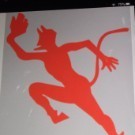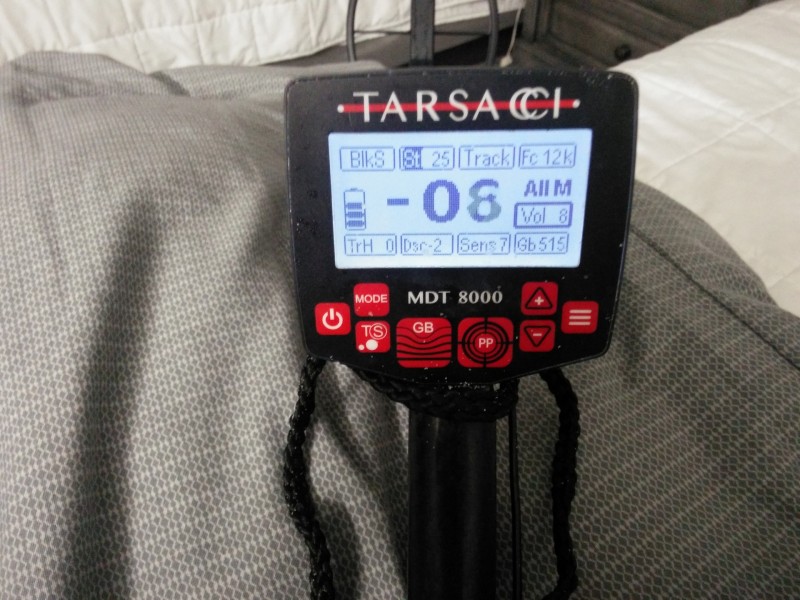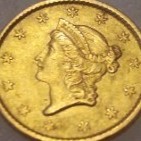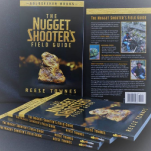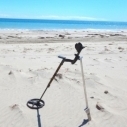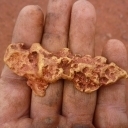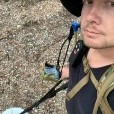Leaderboard
Popular Content
Showing content with the highest reputation on 02/19/2021 in all areas
-
Norvic asked why I was so proud of a VLF when I own and have posted much success with the other higher end detectors. It was my post on rating the higher end Minelabs....so here goes. There are many factors to my craze and style of detecting, but my finds are the facts and not many people can compare, unless they too use the tools (detector) and hunt the style I do. I consider myself a gold hawg or gold pig. I chase it all in terrains flat or tall. Terrain - I live in the Northwestern state of Idaho and much of my detecting in the surround state of ID., is Oregon, Nevada and occasional Montana. For the most part, OR, MT and ID are pretty much the same with steep terrain mountainous rough country. A day of electronic prosecting and hiking in such states, is much harder on the body for a guy my age, heck it’s harder for anyone. Going to Arizona, Rye Patch and other Northern Nevada high desert areas is a treat for my body in more ways than one. Maybe that is why so many people detect there? It’s easy to drive and get to without walking…boy are most of us lazy? YES, including me at times, but not in my home state (backyard where I play). The ID, OR, MT mountains have steep ravines/canyons and the water is at the lowest point. Here is the many miles of hand placer workings, dredge tailing and hardrock mining ore dump piles. The gold I am chasing is the stuff the old timers missed. Pic below - This huge ore dump pile produced a few thousand dollars in Specimens. This is the not so steep side and we had to tie off with ropes on the other side. Half the targets would roll down the hill and need to be found during a break when we were at the bottom. The PI's can't see this time of gold. Trash - Trash is my treasure in a way.. as I know the site has not been hunted as hard. Trash is what most detectorists hate, and I too get that way on occasion, but I know if I'm patient, I'll eventually be rewarded. A big factor I run into is 100 to 150 yr old man made trash from the early prospectors. They left much of it on the hill, in the placer digs and tailing piles. Many of the small mining camps were right on or near their diggings and they just tossed the old food cans, tobacco/coffee tins and worn out leather boots with hundreds of nails and broken, picks/ax heads shovels aside. Pic below- In old tailing piles a lighter, faster, better ID detector is best. He who digs the most non ferrous targets in a day, get to smile all the way home. Pic below- is the 1 pound specimen after cleanup. Tools – Know your detector, its limitations, strong and weak points. Bigger deeper detector is great in flat terrain and areas with limited trash. Raw depth and power is amazing to have, when the target you dig a foot or so deep is not a sardine can. How about a shovel head at 2 feet or more? Think about it and what you do when digging 5 or 6 of those an hour with your big deep penetrating detector. What does your body have left in the tank? My lighter VLF is easier to swing in rough terrain, has better Iron and Target ID, is not as deep or powerful in trashy sites. It saves me time from digging unknown iron targets, it saves me energy from digging deep holes, it saves me energy from having to pack around a bigger bulky detector. The proper detector for the site is a must and in many cases my lighter, faster, better target Identification, sub $1000 investment is the right tool. Pic below - This golden oreo was recovered in old hand placer workings with my VLF. Having what I consider the best identification VLF gold detector on the market saves me time. Pic below - It was recovered at 16" with Minelab EQ-15" coil. Yes I'll be going back over this area with the new CoilTek NOX 15" round as it is even deeper. Gold Knowledge- This is confusing to so many people as they think gold is gold. Yes I too used to think the same way. Luckily I hunt a variety of gold producing locations and sites I like to detect and learn from. My many years of comparing/testing detectors at such sites has given my staff and I an understanding of gold, its characters, density and how the elusive Au responds to the varying detector models from the different manufactures. Many of the nugget photos being shared on social media in years past were dense solid gold pieces and they are beauties. That’s what the detector could easily respond to. In more recent years, the sizes of the nuggets became smaller and we started reading about and seeing some nice specimens. The newer GPX detectors with their advanced tuning and soil timings (Fine Gold) would outperform their older brothers (SD/GP’s) on smaller and courser gold, so when get to make more of those finds and share them. Most recent years has us using SDC-2300 and GPZ-7000’s. Again, the gold gets smaller and the amount of crystalline gold, wire gold, salt/pepper specimens are being unearthed with these detectors supersedes that of their older brothers the GPX series. Pic below - This softball sized specimen was found with a VLF and has multi ounces of gold. VLF picks it up deeper than many bigger detectors. Pic below - This beautiful 3" long quartz and gold specimen came from a trashy ore dump pile with a VLF. Pic blow- These quartz cocoon wire gold specimens bring a premium and come out of hard rock ore dump piles. Pic Below - The PI's don't see these rare pieces, the 7000 barley does on a select few. Pic below - I have a feeling the extra sensitivity of the new GPX-6000 will do even better. Proof – The facts are in the vault at the bank. I own beautiful specimens pieces recovered with detectors and have tested many on a variety of detectors. I have gold finds that are multi ounce pieces and they contain 2 or 3 ounces of gold in them, but for some reason an SD or GP don’t see them, even less than an inch. I also have such pieces my GPX 5000 does not see, but my GPZ-7000 does. What is most amazing, is I have pieces of gold with multi ounces of metal and even the ZED has issues or can barely respond an inch or two away. If this is the case, then why do I have these find gold pieces of art? I’ve taken the time to test and learn my detector tools and have found a certain trusty VLF sees them all, can ID them all, is lighter in weight and so I get to hunt longer, saves me energy since I don’t dig as deep for unwanted targets. Pic below - This specimen came from dredge tailing and the speckled pieces like this get missed by most PI's. Pic below- Over $800 in gold in this 3 ounce specimen and my VLF does better than my GPX-5000 and my SDC-2300. The SDC goes deeper than the GPX. You better know your gold and your detectors capabilities or lack of. Pic below - This 3 ounce specimen was found in trashy hand workings. I actually had a GPZ-7000 here for a couple hours and gave up because of the amount of item trash. A GPX-5000 with DD coil run with DISC mode would be better than my GPZ, but then again my NOX does even better. Better target identification of my NOX, is most important at the site this 3+ oz'er came from. GPX-6000 – A new tool and one that has Gerry very very excited. Now we are about to get a revolution of Geo Sensing Technology with PI power and capabilities for a wider variety of gold textures, densities, characters and sizes. Minelab (and their track record) is even telling us some of such capabilities and so I and a few of the guys who do not like to miss gold, are getting ourselves prepared, getting our old sites, lined up and making sure we are going to take advantage of the stragglers. Remember when the SDC-2300 and GPZ-7000 came out and all the slow response from the majority. You folks missed the opportunity of a lot of gold. My guys and I were killing it in NV and AZ on those so called worked out sites. Was it a gamble to spend that kind of money? If that’s what you love/enjoy and if you have a good track record with Minelab, it’s bet I’ll take most every time. I don’t lose detector bets very often. Pic below- This stunning collectible specimen was found by my brother with his SDC-2300. It came from a place he had previous hunted and found gold with his GPX-5000. The 5000 does not even whisper on it. Minelab claims the GPX-6000 is more sensitive than the SDC-2300 & GPZ-7000. I can't wait to use the GPX-6000 at the site and many others. Hopefully this story and the pics I shared will help educate some of you on how the different detector technologies produce more gold. I realize it's hard to put down your old reliable detector as it has probably and hopefully served you well. If your sites are getting thin of targets and or gold, just maybe a new detector can put the smile back on your face? I'll go back to this simple statement I have said below in other posts and it is the absolute truth. You can't find what your detector don't see. PS - I’ll be honest though, for me it’s the lighter weight, better ergonomics, not being tethered in a harness and User Friendly that has me sold. The extra gold my new GPX-6000 is going to find, is a bonus. PPS – I’m just as eager to test the GPX-6000 with some of my gold and see how much better/worse it does than my GPX, SDC and GPZ. (I'm educating myself). PPPS – I still feel there will be a place for my VLF, as it’s lighter, and have better target ID. See you in the gold field, where the most knowledge is learned. Or speed it up with our 3 days Field Training at www.gerrysdetectors.com Happy Hunting. Gerry14 points
-
Well, this a very slow response but it is one. First, late in 2020, the book began to sell at a faster rate than it had since it was first published. So I did a quick update to include the GPZ 7000 and a few other housekeeping items and then went to have it re-printed in late August (at the last print the 5000 was the flagship Minelab). To my disappointment, I found the printer was greatly delayed in reprinting because of Covid 19, now taking 3 months to print as opposed to one month in the past. Because of the delay, my distributor ran out, Amazon ran out and I ran out too. Most dealers had none in stock either. In late November the new print run was finally completed and the books delivered to my distributor in southern California. Amazon and my distributor now have plenty of the newly printed copies and it is in stock with them. However, I am myself still fully out of stock of the book. Because of Covid, I am delaying making the 1000 mile round trip to pick up copies from my distributor. Probably that will happen in March. I reprinted 3,000 copies in the fall and am now needing to print another 5,000 to keep up with demand. Its going to print now, and I wont have time to include the 6000 in the new edition, who knows when the information on this detector will come out. It will be a couple months in the field being used before we really have good reliable comment on it anyway. Likely the next print after this one will include the 6000. Second, printing for Australia has become difficult. I used to print here and ship books over to Australia, but the shipping of small lots of heavy items (like my book) has become crazy expensive. The last shipment I made was actually at a loss. I had a small run printed there but the cost of printing small runs and delivering it to JP makes the book almost as expensive there as it would be to ship my copies over there. I barely did better than to break even. I only am able to make a decent profit on the book here in the US by printing several thousand copies at a time. And before anyone suggests print on demand, no, it is not any cheaper, it is more expensive. 2020 was a poor prospecting season between the virus and the fires. I am hoping for a much better 2021. The last day of the season was the best one (picture included). I am hoping my luck continues over. Chris7 points
-
Tom Walsh said me today : There has been no official price decision or announcement. There has been no official release announcement on -AQ. We will continue to sell -AQ limited as in the Past when the next batch will ready.6 points
-
From https://company-announcements.afr.com/asx/cda/d72645a4-716e-11eb-8e1f-ee060ef5e0c8.pdf February 18, 2021 Metal Detection – Recreational, Gold Mining and Countermine Minelab is the world leader in handheld metal detecting technologies for the recreational, gold mining, demining and military markets. Over the last 30 years, Minelab has introduced more innovations than any of its competitors and has taken the metal detection industry to new levels of technological excellence. Minelab delivered another record first half, with sales increasing 55% to $155 million. The growth in recreational and artisanal gold mining sales were due to our ongoing geographical expansion, investment in our distribution channels and new product innovations. The unique and distinctive technology embedded within our metal detectors underpins the success of this business. We are particularly pleased with the further diversification of our sales revenue, with our products now achieving market leadership at each key price point. Minelab recently introduced the new GPX 6000, which includes our latest GeoSense-PI (Pulse Induction) technology. This technology automatically tracks and removes unwanted ground noise, providing an easy to use, light weight and high performance machine. This product will be released to the market in significant volume from Q4 of this financial year. We continue to observe strong demand for our metal detectors with January achieving an all-time record level of sales. Note that the Minelab fiscal year runs from July until June of the following year, so fiscal year 2021 is already half over. The mention of the GPX 6000 being released in volume in Q4 is referring to April - June of this year. Minelab has dominated $1500 plus high end metal detecting for some time. This note “We are particularly pleased with the further diversification of our sales revenue, with our products now achieving market leadership at each key price point.” highlights that with the introduction of the Equinox and Vanquish series, Minelab is probably also now the leading seller of mid-range and lower price detectors.5 points
-
We out a couple of days ago and as usual found something strange. I believe it is a "replica" or "counterfeit" Draped Bust Silver Dollar. When it came out of the surf it was just a rusty disc. I was going to just toss it but my ole hunting buddy talked me into cleaning it up a bit out of curiosity. It is the same diameter as a silver dollar. It only weighs 12.6 grams. It does have a reeded edge. I could make out part of UNITED STATES but the font was larger than a regular silver dollar. It appeared to have a shield with eagle wings on the reverse. I could make out a lady facing to the right. And 17?? for the date. Attached are some pictures for your viewing pleasure. Note: not sure why the pictures are upside down and sideway.5 points
-
Shinto -- Briefly, different "classes" of targets (low conductor, mid conductor, etc.) respond/react differently to different frequencies. Essentially, as the transmitted electromagnetic energy emanating from the detector's coil encounters a metal target, the transmitted electrical field moving across the target as you sweep the coil induces electrical currents in (actually on the surface of, for the most part) the metal objects. And the characteristics of the induced electrical currents are then "received" by the coil, and analyzed by the machine. One of the things that affects the characteristics of the electrical "eddy" currents induced in a given target (in addition to the target's shape, size, depth, and metallic composition, etc.) is what frequency of electromagnetic energy (as transmitted by the coil) the target is exposed to. Certain metal objects are more "resonant" to certain frequencies than others, and so by changing your transmit frequency, you are changing the character of the electrical currents that are induced in the target, by the transmitted energy. As the electrical field induced in the target is received by, and then analyzed by, the algorithms in the detector, these observed, induced electrical field differences (as related to changes in the transmit frequency) manifest as changes in the machine's reported VDI. While there are "clues" which can be gleaned from these differences -- i.e. how a given target responds to different frequencies, it takes alot of experimentation (switching between the various frequencies, and observing resulting responses of many targets over time) to begin to glean any meaningful/helpful information. And, of course, there's still a certain amount of "subjectiveness" there, due to how many different types and orientations of targets exist in the ground. Gleaning these details, is what a good detector algorithm tries to do FOR you. This is what detector designers try to incorporate into their VDI algorithms, of course. That's not at all to say that there are not things you can glean from the information at hand, that can enhance or even "outdo" the detector algorithms; of course, that's what we are ALL trying to do. Anyway, hopefully that helps to partially address some of your questions. Steve5 points
-
I got out 3 times and was able to snag some decent targets. This hunt was done at the rocky beach I frequent during winter. There were lots of targets, more than I could dig in one hunt. I got about $8 in clad. The first row is all the good jewelry, one small 14k (.73g), and the rest Silver. The second row of rings are all junkers. This second hunt netted about $12 in clad and a small/light broken 14k pendant. The last hunt wasn’t all that great but I somehow managed to get a gold tooth that weighs 3.6g. Thanks for stopping by and Happy Hunting.4 points
-
Looking world wide I think they will have no problem in the $2500 range. They have years of R&D as well as the only PI that accurately discriminates iron. I see a well used out of warranty gpx 5000 here for sale $2600. It took me less than a month to pay for my first AQ and nearly the same for my second. There may be a third once the new version shows up. Good luck everybody and stay safe from the virus !4 points
-
I was 41 and looking for a new path after quitting alcoholic lifestyle that was most certainly going to kill me. Contractor i worked for bought a 5000 gpx and found a guy out of gold hill that would train us, so we went down and stayed over night on one of his claims. None of us had any experience with a detector so i was hooked the next morning when we found a 1 gram nugget in the wash. After that day the other guys were over it seeing we did not find an ounce, but i knew enough to know just to find a nugget first time out was impressive. Well then i found out you could find meteorites too, i went off in that direction for a few years, and now i have an equinox 800 that has found me coins and jewelry, and hopefully some natural gold someday too! 😁👍 ht4 points
-
The Tejon in my mild ground the depth increased 1"+ with a negative gb. It would hit my 10" test dime w/ 8" concentric coil. The AT Gold also increased depth to about an 1" with a neg. gb. With the 8x5 coil it would hit a 9" test dime but not 10". How you adjust your gb depends on what king of ground your in.4 points
-
Hello, I was in search for a hobby That takes me outside. I was a rock climber, kayaker, backpacker, Ect...... Bu know at 50 I had a heart attack, and a bad back so a lot of the extreme sports are done. Living near The great Lakes and spending a lot of time in/on/ and near them might be a good place to spend a day metal detecting. I was wondering if anyone has the time to share what is a good detector for around 1000.00-1500.00, All the reviews I have seen so far are trying to sell me something. So un-biased reviews and thoughts would be great. I would like to buy something that I would not have to upgrade for a while. But I know nothing about the brands, or coils, ect... Minlab seems to have a big following but I do not know if it is just hype. Thank You3 points
-
Hia all Paul Cee from the uk, part of the CMD Metal Detectors product R&D Team, ive had a look around and see a few familiar names here3 points
-
My buddy, and member of this forum FlySAR has been providing ring finding service for years in the Portland Metro Area. As I learned many ropes from him, I became the RingFinder rep for the Olympia WA area before my move to Houston. Below is the link to a video posted by the Oregonian On-line newspaper on one of his ring finds. I hope you enjoy the ending as much as I did... Congrats Del, I'm humbled and honored to call you my friend.3 points
-
I’ve owned a lot of detectors over the years, Whites Vsat, Garret Infinium, Gold Bug II, Nokta etc etc and have used a lot of the others. But in Australia I can make a good living with ML machines and every machine that has come out has easily paid for itself as well as paid me to use it. The ML machines I did not like over the years was the GPX 4000 because it lacked SETA, its only saving grace was the Sensitive Smoothing timings in noisy ground, the GP extreme and GP 3000 because of their too fast ground tracking (in homogeneous soils they could track out a deep target before you even heard it) and the XT 18000 which did not do a very good job of the 60Khz and 20 was not much better, the XT 17000 was a far far better VLF and I used that professionally for a number of years. For me I feel I’ve been waiting my whole career for ZVT. In its current guise, even with the weight, I feel the GPZ could happily see me through to retirement. Now that there are more coil choices, and yes I include the X coils in this because if I was full time detecting I would definitely be using them as a tool to increase my chances because the risk is of little consequence when looking at the bigger picture from my personal perspective (this includes the price of the detectors as I have 2 or more GPZ’s for redundancy and backup anyway). The 6000 would definitely be part of my arsenal of equipment just based on the material that has been officially released, but then double down on that because of what I know.💲🥰😇 With a high gold price and plenty of opportunities to target areas I’ve collated over the years it will be a very good bread a new butter machine as I get older or for frequenting the more mountainous Terrain. For me Minelab and there continuation of investing money into R&D is a little like having a really good retirement fund, it gives me a feeling of security in the future because I know I will never be broke. I cast my mind back on what it was like 10 years ago and look at what I can easily do today, to get bored with the ease of pinging a piece of gold in flogged ground speaks volumes for how far technology has come. JP3 points
-
Nice explanation, Steve, both the theoretical and the practical views. Mitchel made a good point which I expound upon. Even the most sophisticated detetors today don't take advantage of all the information at hand, leaving our brains to do some of the 'heavy lifting', too. With time as more powerful processing (hardware, maybe, but software for sure) gets implemented it's likely the disparity between the best, most experienced detectorists and the less experienced ones diminishes. As to how much or when, we need an even better crystal ball than is currently used in the months leading up to a new detector release. 😏3 points
-
Interesting replies, thank you for sharing 😎 I have been detecting when I was little boy. My first find are coins my first ring is plastic, my first chain is gold chain, my first earring is gold earring. I’m doing well in this younger age. I had much fun😊 All the best to everyone 🙂 Thank you 😎 Sincerely Hamid3 points
-
I was doing some work in really hard to dig ground and deep gold. I was using the GPZ to see the deep targets and even with the standard coil you need to dig a big hole with the 7000. So I just dug a little starter hole to mark the spot. No paint left behind, no marker chips or flagging. Just the start of a hole dug to mark the spot. Afterwards, I'd go mack with the SDC and and dig it out - and with the smaller mono coil of the SDC, a much smaller hole needed to be dug. And I got some nuggets way too deep to see with the SDC by itself. I hate digging those GPZ craters , especially on deep targets - but I do like the deep gold! Its the lazy man's way -3 points
-
I was actually asked that previously in this thread - this is my response from Oct. 2019 and really nothing has changed: There is no ebook version coming. I looked into it and for the reason that ebooks automatically resize the material no matter what device you are using, they work very poorly for books with loads of illustrations - like my book. I looked into it and it was nothing but roadblocks and reasons it would not work. Ebooks work great for novels and other books that are pretty much text only, but there are hundreds of illustrations in Fist Full of Gold. I remember looking into it and my book, including the illustrations, was longer than the maximum of what was allowed on the site I was looking at to convert the book to an ebook format - and this was a function of all the illustrations. I could delete all the illustrations, but it would be a grossly inferior version.3 points
-
Thank you Jeff, that 10,000ft is the factor I suspect, the 6000 might be the detector to help even out our different environments a little. I work to 2000ft and your post helps me understand where you fellows are coming from. I wonder if one day we`ll have a detector operator working on say the moon, imagine how alien his methods would be to us, be long after I`m gone and is SF now. I hope Gerry gets the time to post tis a fascinating subject to hear the different environments we get that heavy stuff and how we adapt.3 points
-
I'm a realist. I'd settle for getting into some places I asked permission for but they either said NO or did not respond.3 points
-
My wife has some of the nicer ones. Most the others are sitting in the safety deposit box at my bank. I have yet to sell any but eventually probably will, it is just a matter of dong it. I'd rather spend timing detecting or selling detectors than actually selling my finds. The EQ-800 is a fine detector for salt water and I have done will. It's now my Back Up go 2 water machine. What do I like using most, the Equinox 600. It gets same depth as my 800, parts are interchangeable if I have an issue and for some reason if it does leak (never had a problem yet) or gets lost/stolen/damaged on the flight, I am not out as much money. I have always felt the EQ-600 is a better bang for the buck detector for most of the people who purchase an EQ and are not in gold nugget country.3 points
-
Greetings fellow detectorists, I'm hoping someone with a deeper understanding of the technological methods of the Equinox series might be able to shed some light on why certain Interrogation methods work they do. I think we are all aware of the little trick whereby a potential target in the mid conductor range in multi frequency can be examined in 10hz; a sudden jump from the teens to the twenties indicates a likely bottle cap. My questions are two fold; first, what is responsible for this phenomenon? Why does a change in frequency potentially change the vdi of a target, and what determines when a change occurs? Second, is there a potential logic here that one can use to devise further Interrogation methods using similar principles? Looking forward to your insights!2 points
-
2 points
-
The photos are from the “internal photos” document posted here. Since every page of that document is clearly marked “this document shall not be reproduced, except in full,” I’ve been linking to the source, rather than copying the photos, as was done on the Russian website.2 points
-
Spring of '69 for me. It took us a while to try and figure out when it was, but lucky for me my cousin (actually my dad's cousin) was 10 years older than me and he introduced me to metal detecting. I was 7 years old in the spring of '69. He took me all over the place detecting, roughly once a week. During the winter we would refinish antiques or go post office hopping and get all the new commemorative stamps that had just been released. He figured out when I started because his girlfriend had bought a 1970 Nove SS and we were detecting a good while before that. I wish I would have kept a log of my first day detecting.2 points
-
I don't think the price is out of wack either. $2500-$2800 I think is max though. I have always believed that these two conditions will always make you money. 1) Have a real, solid, truthful product. 2. Have a great customer relations/service. I feel the AQ is more than qualified in it's capabilities, but fails in the customer relations. I don't really remember when it became fashionable to ignore talking with your customers, maybe 30 years ago, or maybe when lawyers scared manufacturers and told them to do a "say nothing" approach to business, but it's wearing a bit thin with me. I remember when White's was a very easy company to do business with... great customer support and really good prizes for find reporting. I never had a Tesoro but having that warranty and low prices kept them in business as well. But something changed and now we are out of the loop. How can someone buy a product when you don't know what it costs, when it will be available, and if it will be reliable? I feel real bad for anyone on the list that is waiting for a machine.2 points
-
Positive gb the detector runs smoother with less depth. Negative gb makes it hotter, more chatty and can add depth. Some detectors won't increase the depth with a negative gb and work best with ground balance right on. You'll have play around with it and see. I don't know if it helps the Multi Kruzer or not. As soon as the snow is gone I'll try it on Gold Kruzer.2 points
-
Gerry, Your backyard and my backyard are pretty much the same terrain wise. Have the same experience with how a PI and the VLF respond to the type of gold specimens I find. Very interested on your reports on how the GPX-6000 responds to the different type of gold specimens you have. Those quartz cocoon gold specimens are outstanding! Working on some gold specimens now and will have a write up on how they were cleaned. Randy Smith of Treasure Electronics who was our distributor at the time: My wife on a steep tailing pile:2 points
-
Florida Gulf, fairly mild. Machine running very quiet, not much noise even getting slapped around in the Surf. Dead areas bearly a peep. Running in All M. , my main disturbance comes from those rusty flakes. The tone on them is usually low so it doesn't brother me much. Especially cause I'm getting real nice depth, plus the machine is sensitive to small targets too. I'm having good luck on Silver and clad. (When I find decent conditions) No gold yet, but it's getting its share of nickels so I'm not worried about that. My question is, if anyone can suggest how I can knock out some of this rusty scale without sacrificing gold. I'll live with with this small problem before lessening my chances for gold. Thanks for any help.2 points
-
No company is in business for their health and all have to make a profit. If I make a PI detector do I want to sell one are do I want to sell hundreds. I can’t make a profit even selling one out of a hundred then why bother with a PI . If it’s some great detectors out there for under 1500. for land and beach then anything above that in price will be a hard sell. You can always find some willing to go for the high dollar ones but again it’s volume of sales that pays the bills. Chuck2 points
-
Negative ground balance is setting ground balance number lower. You have it backwards. It is positive ground balance when the coil is moved to the ground and you hear a sound. Negative is when you raise the coil and you hear a sound.2 points
-
The detectors balance is great. Feels very lite to me. When the ice melts I will get out and test the numbers and stability in my iron enriched Virginia red clay.2 points
-
You have to get a PDF in order to send the book to the printer. That is what they use to get the printing adjustments from. Chris is right with the ebook not being viable. It is easy to pirate, it will hamstring your paperback book sales, it doesn't work well will books like Chris's and mine. Like Chris, my book has 170 full color photos and it screws up the whole flow of the book because of the dementions of devices being viewed on. My next book, "Strategic Gold Detecting - The Art & Science Of Gold Nugget Exploration and Recovery" will have around 350 full color photos. As an ebook that would make the length of the book enormous. The issue of the book being pirated is a huge discission for Chris and myself we have put an enormous amount of time into writing these books, taking the photos which can take years to acquire, then after it is written it still has to be layed out in a format that is appealing and flowing as you read it. The bigger the book the bigger the challenge. Then you have someone in China or someplace else stealing the book, printing off pages, triming things off of it and making a new PDF and reprinting it and distributing it around the world. A week after I received my book from the printer, someone from China got ahold of my book, and when I looked this guy up on the internet I found that he takes images and recreate them. My book got pirated a week after it was released. This will really tick you off. Chris is right to not want to do ebook versions. I have dealers in several States plus I have my website. I looked into distributors but they will severely destroy your profit margin, and that is something I myself am not willing to do. Print on demand is a money making venture for the company printing the book, not the author, plus the books are made by high end copiers, not by web press. You will always have a higher quality product by going the route of a web press.The print on demand was going to cost me four times more to print than getting printed on a web press. At those costs you can't create a book and make a profit.2 points
-
As a User Program I still use the Beach1 or Beach 2 program .. .. with a slightly higher iron bias setting ... it's mainly for checking suspicious signals, / a good signal usually has the same ID in both programs..but also signal modulation ../ but also so quickly I will find out which program can work more stable on a given field the best ..2 points
-
Think I was about 16 when I purchased a Micronta detector from Tandy Electronics (oz version of Radio Shack). Thought I was going to find loads of gold nuggets and ended up finding lots of buried fencing wire and an inch thick steel plate about a foot down, and also had plenty of bump sensitivity issues with the coil. I first tested out the detector in our front yard and used Dad's wedding ring as a target and couldn't locate it - it was found eventually.😂 Ended up ditching the Micronta and purchased a second hand MInelab XT17000, though had little time to use it once employed in the gold exploration industry in some pretty remote areas. Later on for some silly reason I thought of trying to locate an old Micronta detector for nostalgia sakes, probably a good thing that it never eventuated.2 points
-
Speaking of marking, not nuggets but tracks etc... one of the big annoyances with mining companies on their leases here in WA is prospectors using flagging tape. They can’t enforce it but they’d rather you didn’t as it can confuse the hell out of drillers and road crews who rely on it. Best use something else if possible and always remember to remove it when finished and leaving an area.2 points
-
One of the first things i learned about beach hunting from the old timer's! Never toss anything away till it is absolutely identified! Many finds on the Treasure Coast, and elsewhere, that are valuable, have been next to corroding iron, and can get covered, or encased in iron oxides, or beach sediments, or any combination of concretions! Judging from the pics, i think some more cleaning is needed to be definitive! Than a chemical test or metal scan! Still my be silver with enough oxides on it to be mildly magnetic?!🤞👍👍2 points
-
TVR.......you are spot on when you refer to the AQ as a “niche” detector. The problem for Fisher is niche detectors don’t pay the bills 😳2 points
-
It is attracted to a magnet so the FE of some sort is confirmed. It does appear to be on the thin side compared to a legit silver dollar but that could be due to the rusting away of the surface. Given the fact that it is obviously iron and so little detail is left, I think that the only value is of conversation at best. LOL I find it fascinating that such odd things can be found at the beach. If someone takes anything to the beach they are liable to lose it there. In this case I am grateful that my ole detecting buddy was more curious than I was and insisted that I check out the rusted disc. Now I have a great conversation piece. 😀 And now those of you who read this post will be thinking about all the odd things that you found and threw away over the years and now are wondering "what if I had cleaned that thing up just a little bit..."2 points
-
That is certainly strange and intriguing. Does it appear to be the right thickness? As you noticed it weighs less than half of what a genuine silver dollar of that time period should. The density of copper (or bronze or brass) is not that much less than 90% silver alloy so I expect it is thinner than the dollar. Typically when a design change occurred the mint would mint a few pattern coins, often of base metals, as a kind of prototype for those in the decision chain to decide the final design. Those are rare and quite valuable, but why would that end up getting lost? Well, strange things happen. You mention counterfeiting and replica making as possibilities. Those could carry value, too, although given its condition probably not that much. Here's a book that would likely indicate if a pattern for that coin was made and what its composition was. More research needed!2 points
-
2 points
-
. Joe - you might have to change that stance a little if you still want to change your MO and have that watchteam backup guy to be around to help just in case there is an "unplanned event". Speaking of which, as a DMV resident, if you do ever need a buddy to back you up at spot you don't mind revealing, don't hesitate to PM me. Always up for a detecting adventure in the area and to learn some tricks of the water hunting trade. I'm more of a relic and wet sand guy, but don't mind soaking up some rays and scenic bay locales. I'll bring my water wings. In any event, very glad you are on the mend and able to tell the tale. Great lessons to be learned from your experience and you will undoubtedly save lives with your recommendations. And of course your legendary status as the Chesapeake Bay gold ring vacuum cleaner remains intact. If someone wants to start a "how many gold rings have you found in a day" thread, I am sure you would have some tales to tell.2 points
-
I have the same issue (it is actually a good issue to have!!!) as Gerry and have found more gold nuggets, some up to 1/4 ouncers at 6 to 10" in really bad mineralization and sub .1 grammars at 2 to 4" with a sub $1000 detector also. The PIs I used to own were heavy, awkward to swing and wore me and my back completely out within 2 hours. Most of that detecting was above 10,000 feet elevation to be sure but they still wore me out. I can detect just as well and feel a lot better doing so in those same areas with a Minelab VLF detector that is not named the Gold Monster 1000. If all I did was detect relatively flat to slightly hilly terrain without too many obstacles and at less than 3,000 feet elevation, a 6 to 8 lbs Minelab PI would be no problem. That is not where I detect most often.2 points
-
Welcome-to-Hunt Outings, simply referred to as a WTHO, have been held since the spring/summer of 2015. Our last, as the above link reports, was our 12th WTHO. One was held in Utah, two here in Eastern Oregon, and the remaining 9 have been held in Nevada. Unless or until we need to cough up some $$$ to gain access to a site, the WTHO's are no charge. Nothing more than getting yourself to the Outing, taking care of where you'll stay, be it a motel or an RV Park, and what you eat. They are open to anyone, and we have quite a few people who have made many to most of them. So far, Oregon Gregg has participated in all 12 of the Outings. There are 6 or more ghost towns we search and have based most of the Outings out of Wells, Nevada as a 'hub' since it has places to stay, fuel, food, and makes a great opportunity for attendees to get together. We only held one last year and the Covid issue created some problems or some folks to make the outing. This year we haven't panned one, yet, because the virus is still being an annoyance. Also, my health took a down-turn and tomorrow, Friday, makes 10 weeks since I got a bad bite from the bug, and my recuperation and recovery is moving very sluggishly along. Coupled with that I am trying to sell my place and, if I do, I'll be making a move to central Texas. I am, however, sending out an e-mail this weekend and making a post on my Forums to see how many would be interested in a WTHO #13 back to Wells. As you can see from the post, and if you were to red the reports fro all the past WTHO results, you'd see that a lot of great finds are made every Outing. If we come up with an Outing Date, usually a Wednesday thru Sunday, I am sure OregonGregg would enjoy being the Host in Wells. On the average, our Outing turnouts have been quite good, with 15 to 25 people participating in each of the dozen Outings we have held so far. If my house hasn't sold to bring about the move, I'll be making that outing as well. As I stated, they are free and anyone is welcome. Bring friends and family, and we do have a few families that make the outings, too. If you would like some direct information, just drop me an e-mail and indicate you want information about the WTHO's. You can reach me at: monte@ahrps.org ... or at ... monte@stinkwaterwells.com MOnte2 points
-
2 points
-
I'll try and be realistic (for me -- everyone's opportunities are different). #1) New England Colonial permission that I missed last year because of SARS-Cov-2. #2) Western ghost town(s) -- if Monte does his annual group trek this summer, and if I'm welcome... #3) (the dream trip) Alaska for all the reasons I've always wanted to go, probably not this year, but sometime. All three of those are multi-week adventures, driving and mostly sleeping in my Jeep Compass (except not sure if that makes sense going to Alaska; might have to fly up and rent a vehicle).2 points
-
They always have... Im predicting that when it first comes out there will be a fair bit of negative rhetoric. Just like when the 7k was released, a large percentage of operators were dissaponted (mainly due to operator inexperince) and many even sold their 7's within a couple of weeks of purchase. I was posting my reviews and finds on an australian forum and got ganged up on and accused of being a minelab stooge/liar so I stopped posting there and joined Steves good forum. I really cleaned up in the months following the release, my first trip of 10 days going over the local well known patches netted me 8oz of missed gold! Which payed for the detector and some. We then proceeded to clean all of the patches in the main areas before others eventually cottoned on to how good the Zed was. We spent the rest of the season cleaning old areas and it was a very productive season. While this was happening I pondered what the reason was for all of the dissapontment, I realised that barely any operators take the time to test the new tech in controlled conditions and experiment with the settings over detected targets to try and brighten or enhance them. In fact most just turn on the new detector and expect it to be better than their last machine which they had years to get used to! I suppose it is just human nature to blame the tool for ones inadequacy rather than looking at ones self for flaws in operation😕2 points
-
This morning I wanted to charge my XP MI-4 pinpointer but couldn't open the knob covering the charging plug. After many fruitless attempts, I contacted XP service at metaldetector.com. In an on-line chat, they suggested soaking the tip in warm water for 15 minutes, then to try twisting to open and even reversing directions a few times. After a few tries, this worked. Hope this helps anyone else who might have this problem.1 point
-
I know the answer but let Gerry tell you himself!1 point
-
1974, got a Bounty Hunter detector for Christmas. Used it for a couple of years then took a 45 year hiatus! Just got back into the hobby last year.1 point



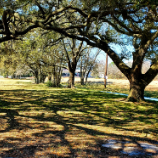

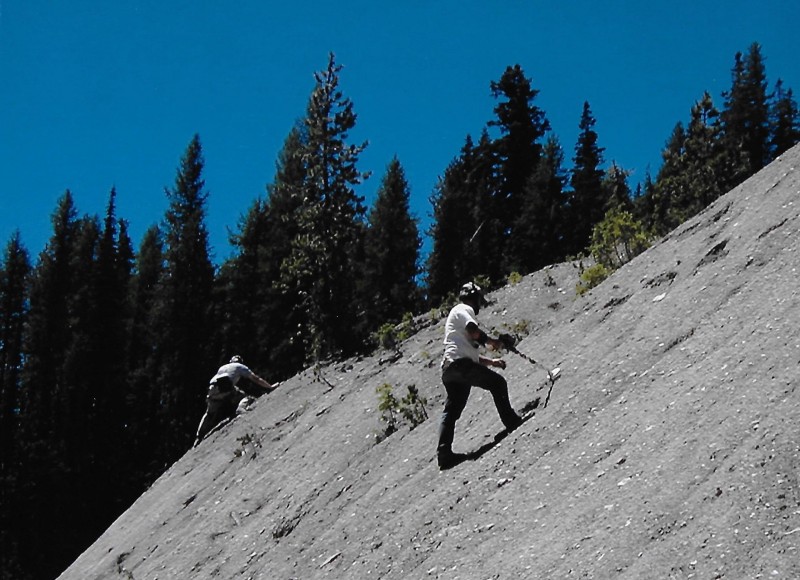
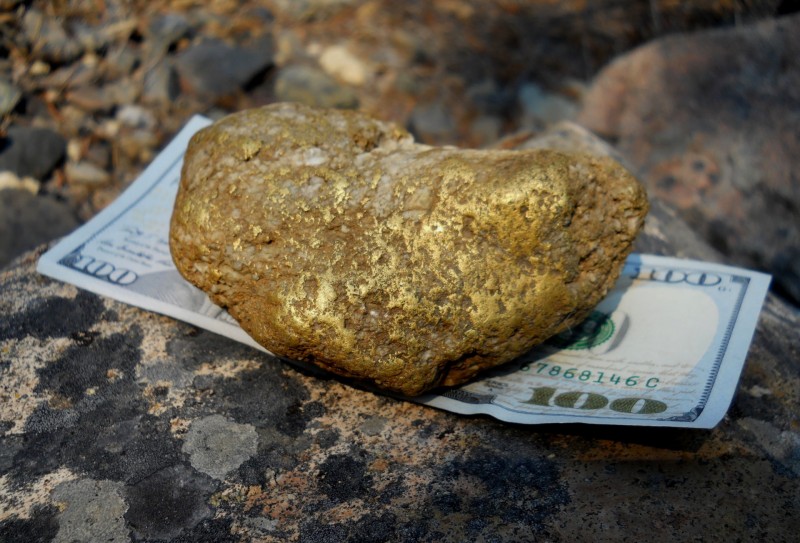
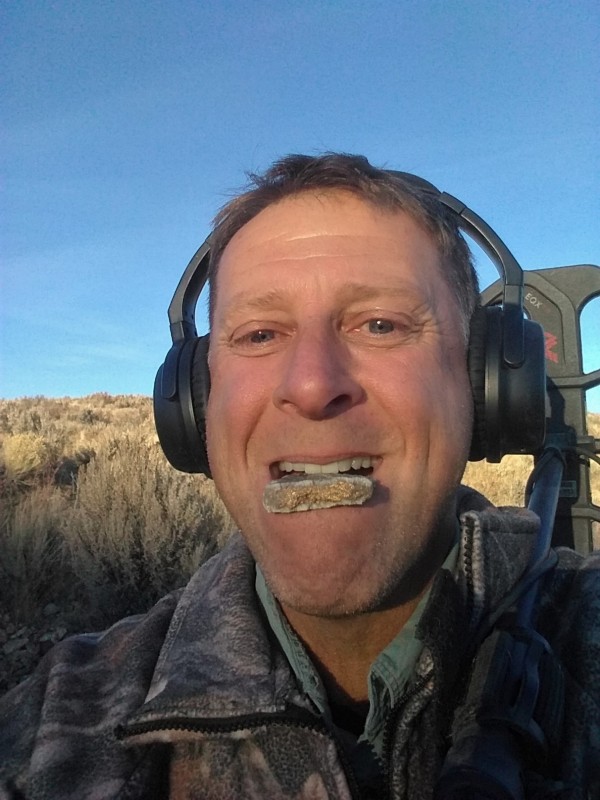
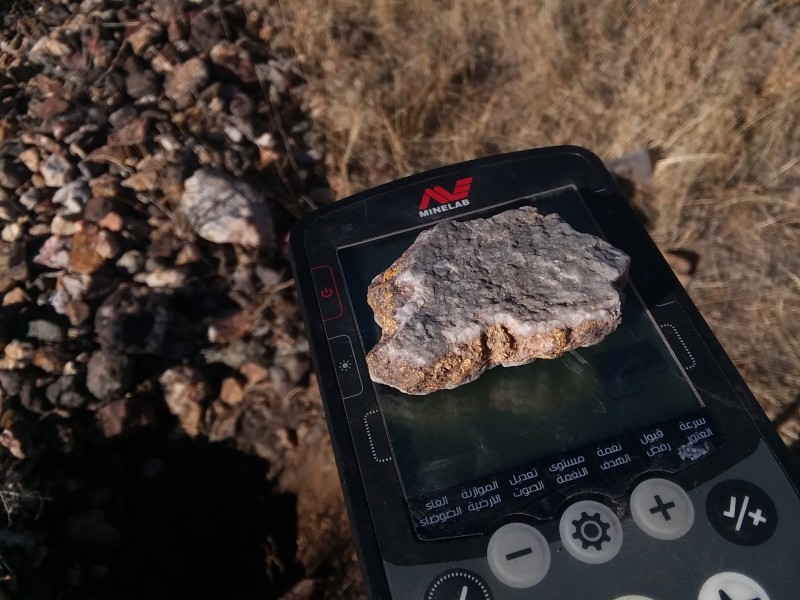
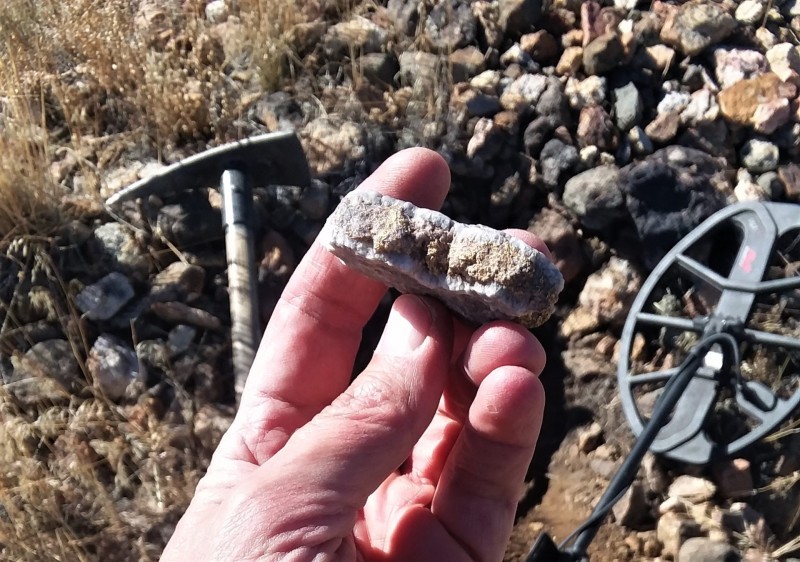
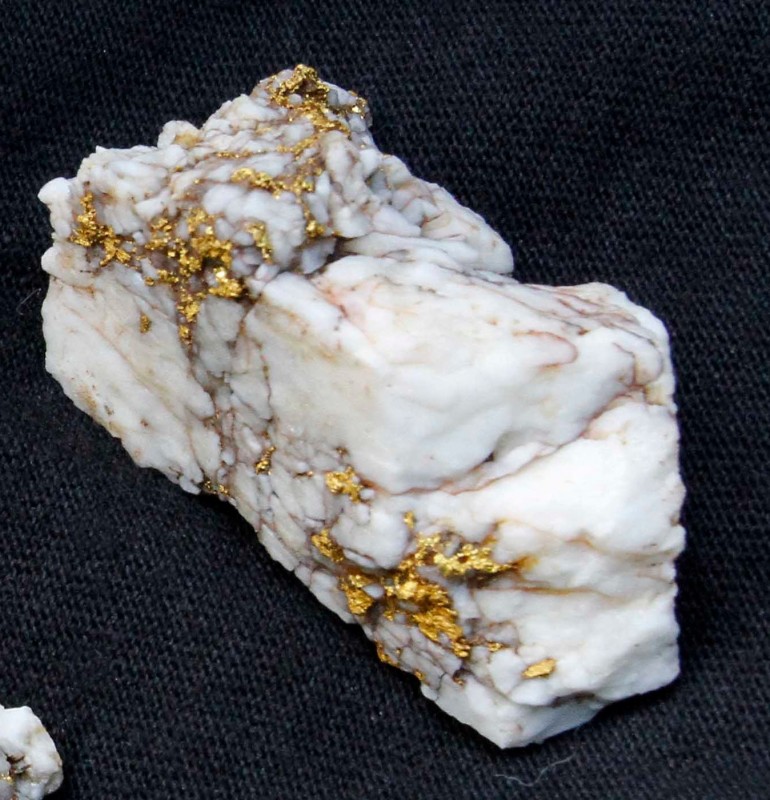
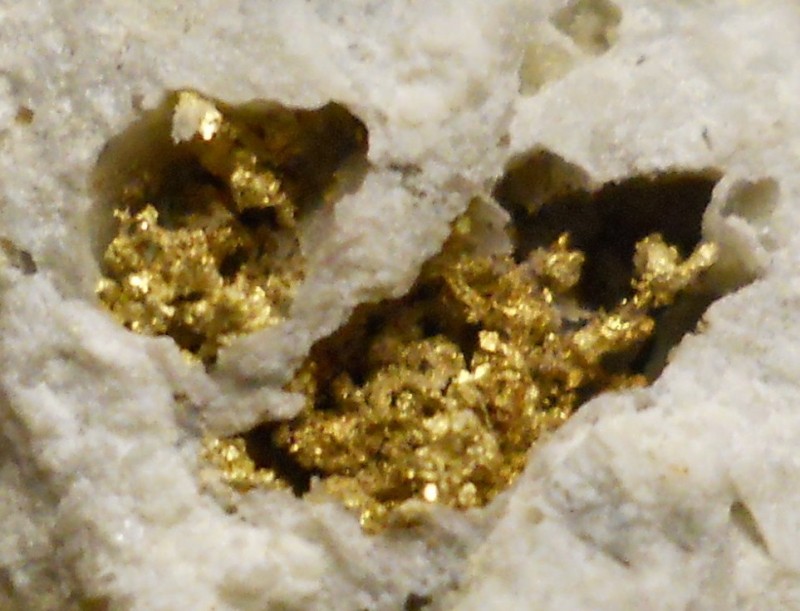
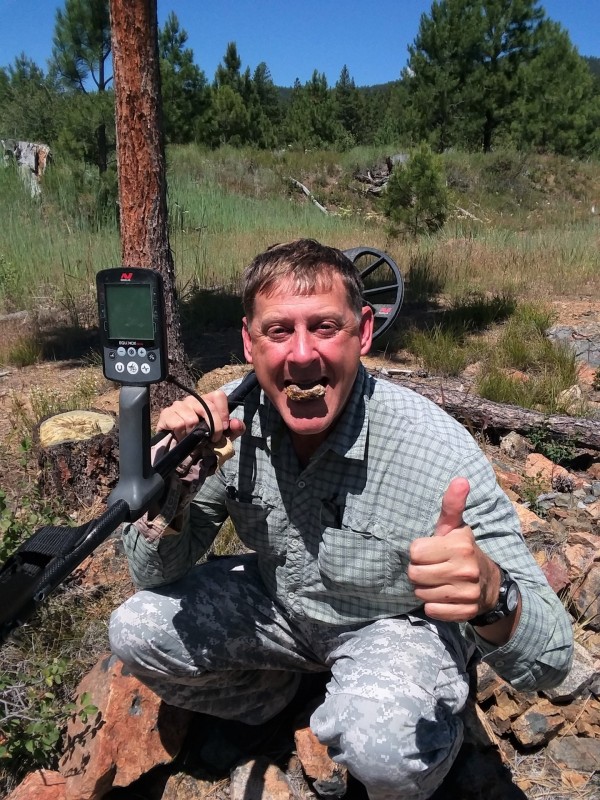
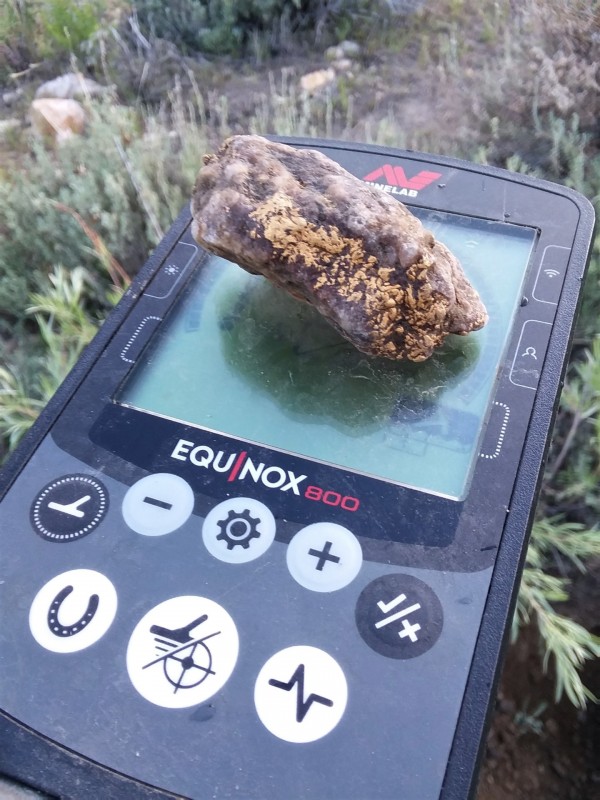
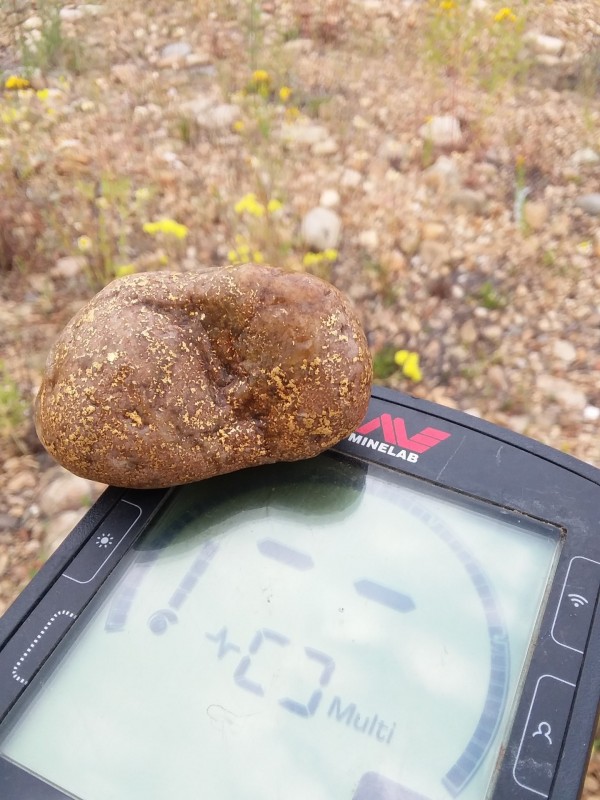
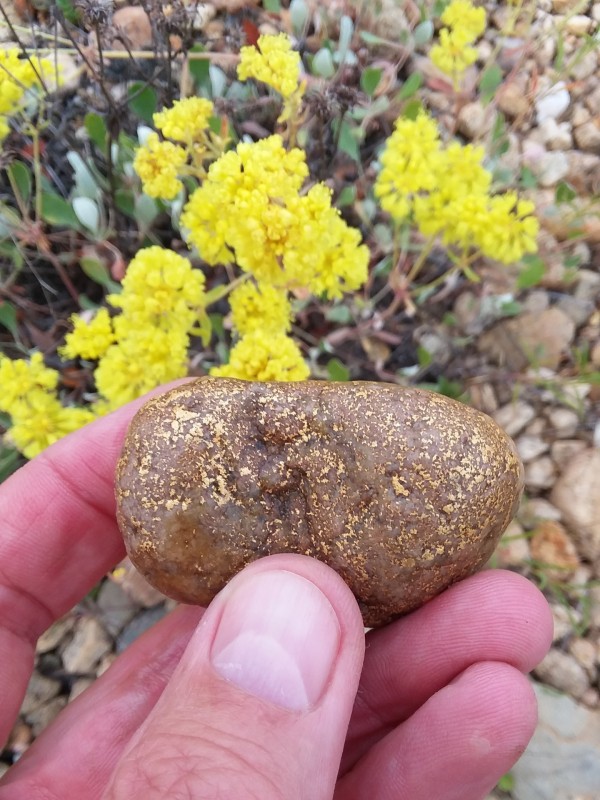
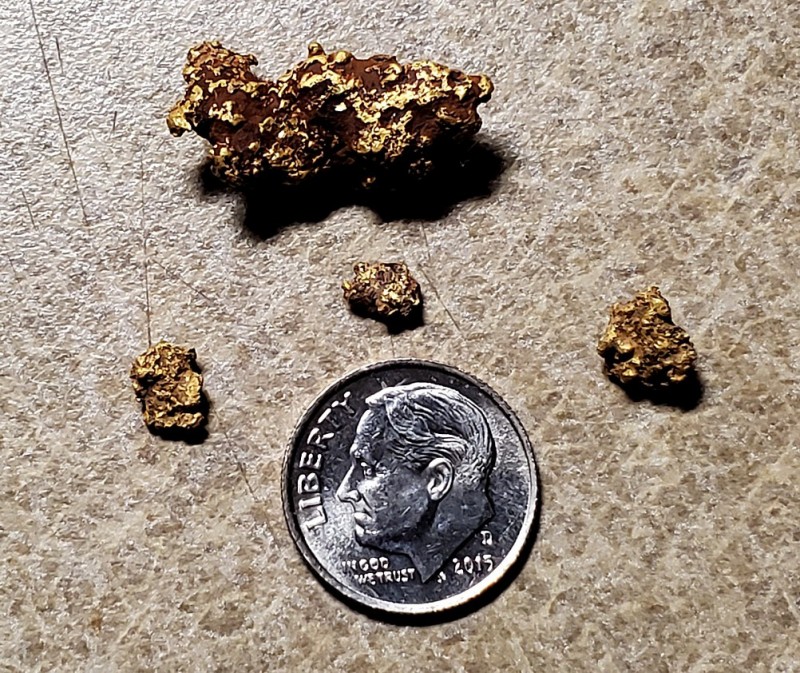
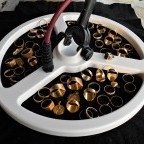
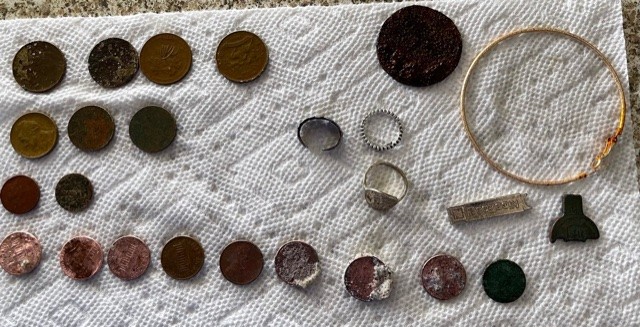

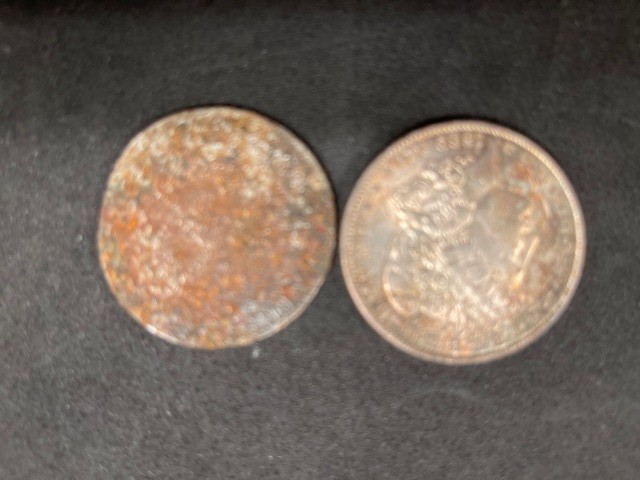
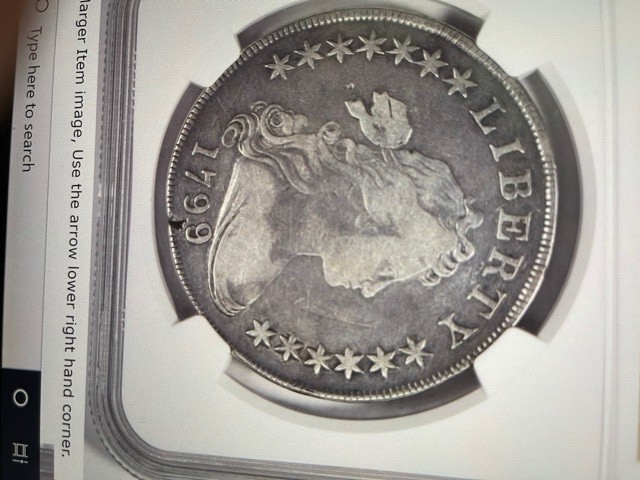
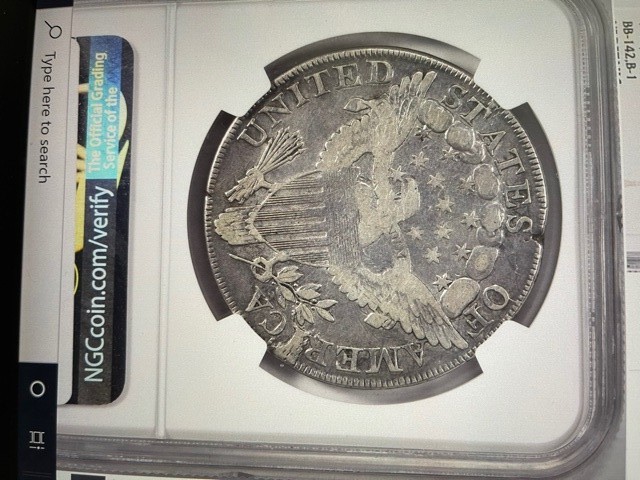
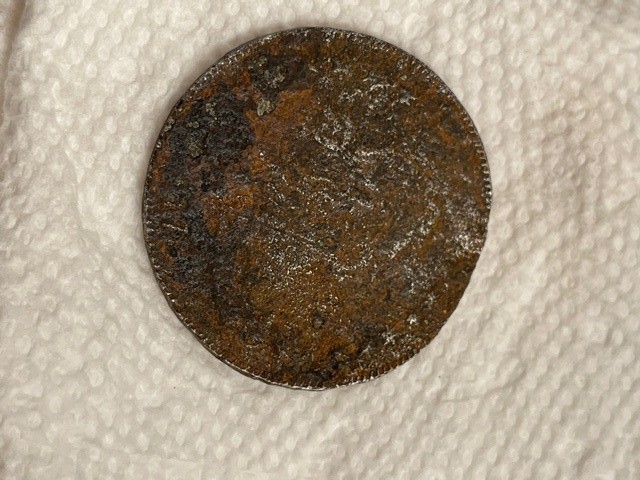
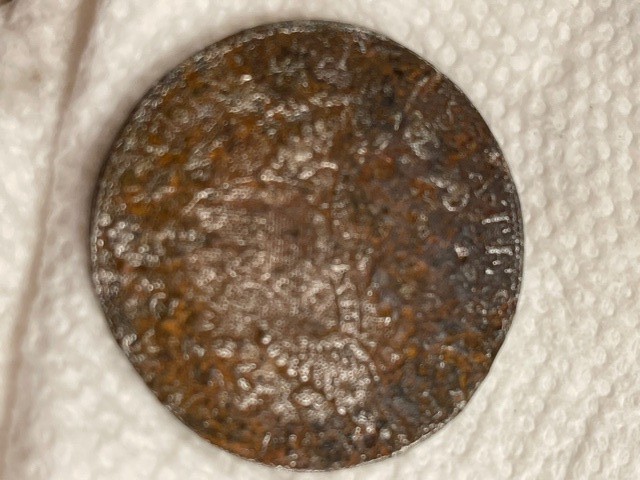
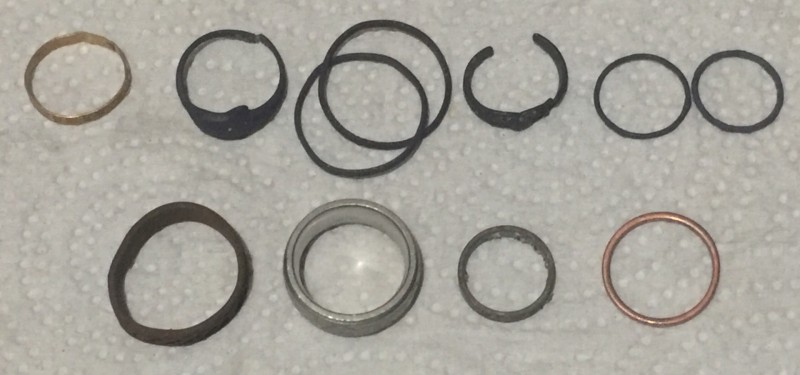
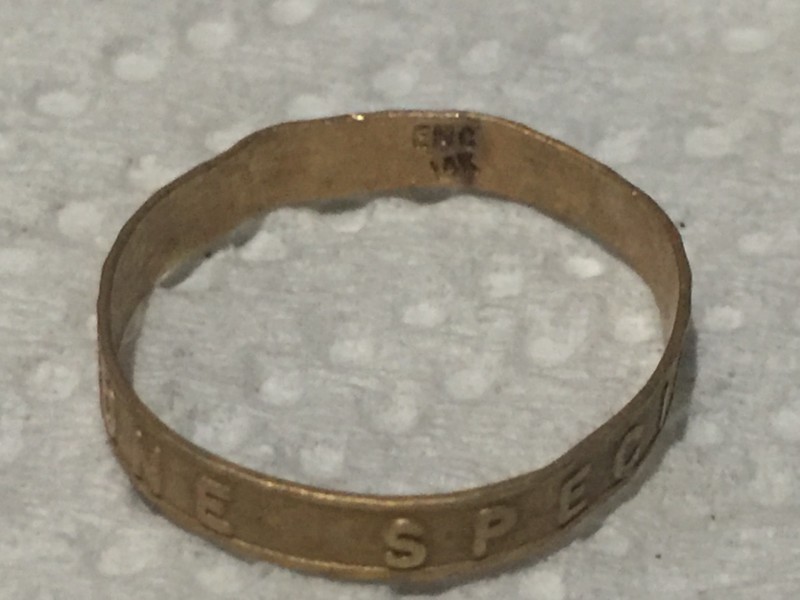
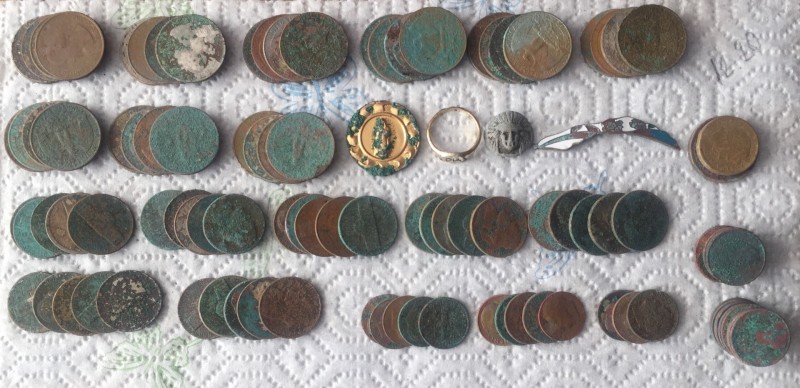
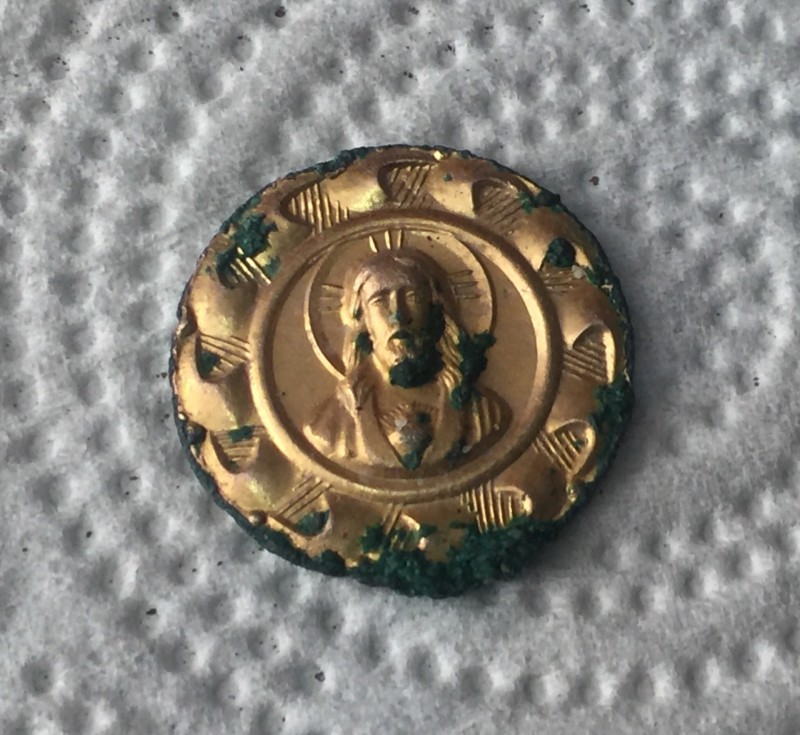
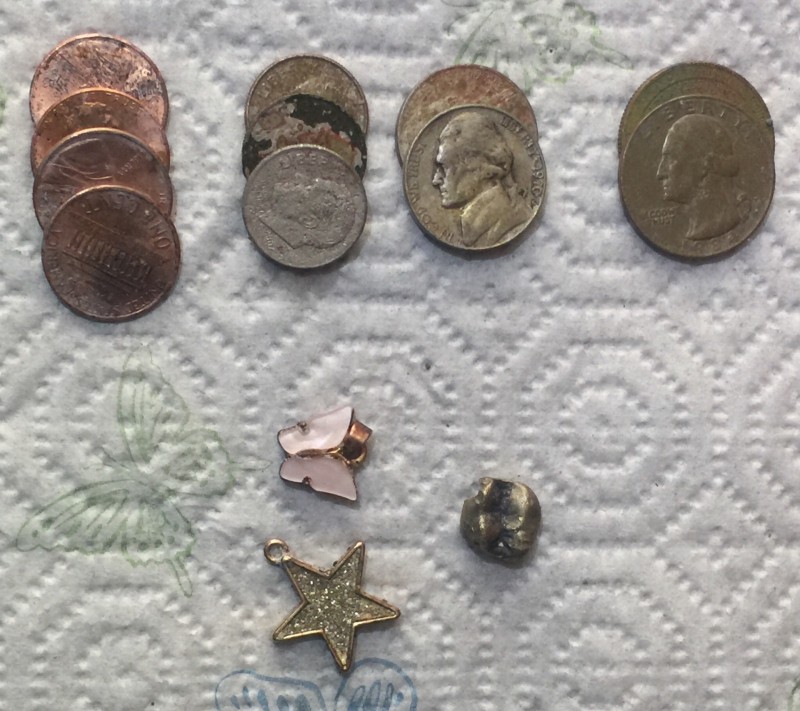
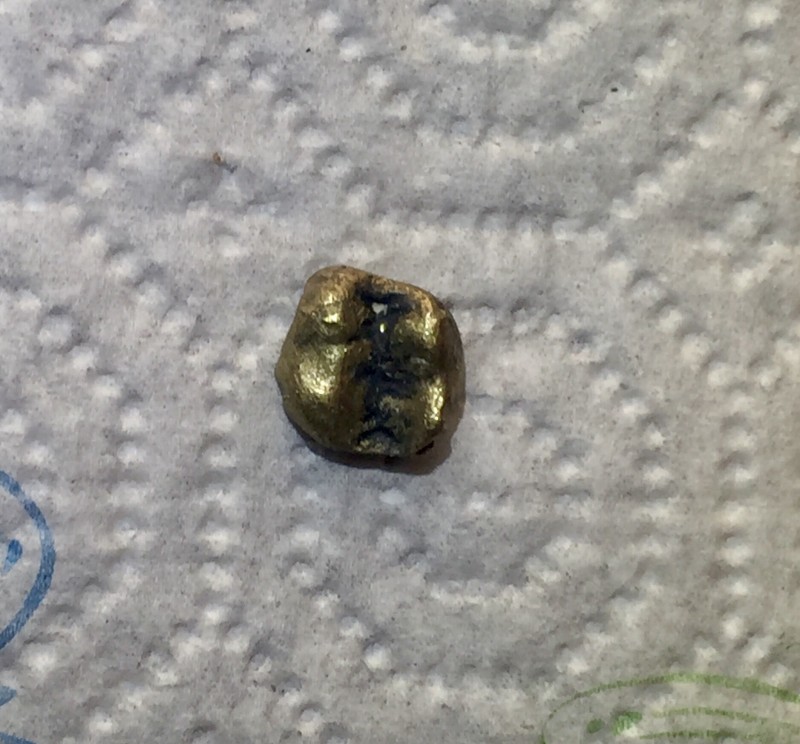
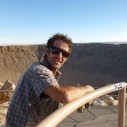
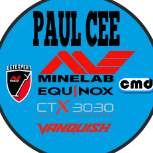

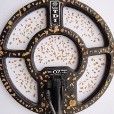
.thumb.jpg.77e4cb5bf39d44bdd2050d2edb7dfdb1.jpg)

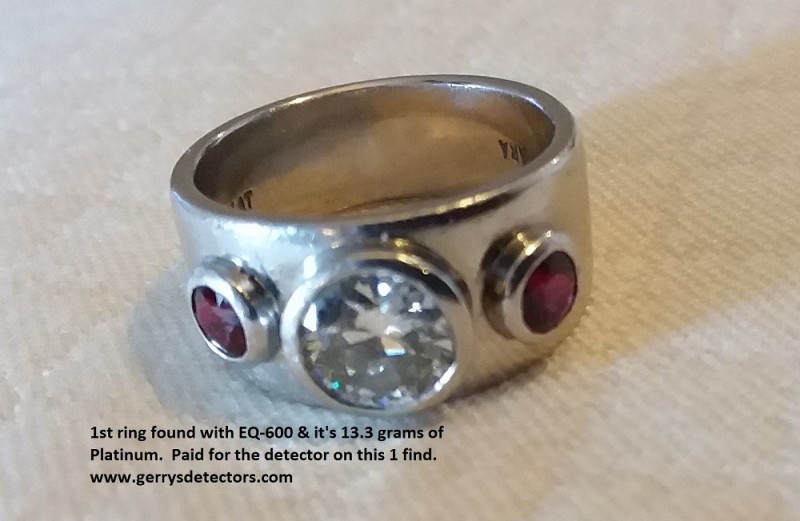

.thumb.jpg.45321b095f0e66d34ebb743e5a399ecb.jpg)
.thumb.jpg.3ab425f1f0ffc694bce628dbe36f26dc.jpg)
